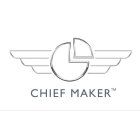
By Chief Maker Executive Development Academy
Elite athletes don’t just play the game - they spend most of their careers mastering their craft through empowering routines. Interestingly, when disruption hits, athletes don’t abandon their routines - they double down on them. For the best, routine isn’t just comfort, it's a competitive advantage. It becomes the difference between crumbling under pressure versus delivering when everything’s on the line
The business world is no different. Leadership is a constant exercise in change management (remember Covid) and so it demands the same pursuit of excellence.
Let’s explore how high-performance routines drive excellence in business.
Routines Forge Executive Presence
Want to command attention in crucial moments, get buy-in from tough stakeholders, or make difficult announcements with integrity? Routine is your anchor. When you’ve methodically prepared for every scenario, and considered every angle, your confidence isn’t manufactured - it’s earned through the routine of preparation.
Routines Create High-Performance Teams
Successful organisations operate on precise rhythms - weekly catch-ups, monthly target reviews, quarterly strategy sessions, annual planning retreats. These aren’t just meetings - they’re the drumbeat for accountability and success.
Routines Are Your Strategic Edge
While others may drown in emails and operational tactics, leaders with strong routines stay focused on what really matters. Daily focus sessions, mind mapping, deep thinking time, strategic planning. Routines aren’t just good habits - they’re a competitive advantage, giving you the chance to recognise opportunities that others may miss.
Routines Make You Resilient
Key talent resignation? Market downturn? Your biggest client jumps ship? These moments are when routines are critical because they keep you focused on your processes and values. The best routines are built for both success and crisis, meaning you’re always prepared, adaptable and confident.
Routines Reduce Risk
Elite athletes don’t turn up wondering what they’ll do at training. Nor do successful businesses improvise their way through quarters. Routines are a standardised health check. They catch issues early, replace uncertainty with process and ensure strategy over stress.
How do you build and embed organisational routines?
Your organisational routines - often referred to as your Operating Rhythm - should be as disciplined as a pre-game ritual. Weekly meetings, monthly reviews, quarterly offsites, annual planning sessions. Each meeting is a crucial component of your strategic framework and the execution of your company strategy.
But it’s more than just the mechanics. Great organisations use rituals and traditions as routines to create company culture - welcoming new talent, celebrating victories, recognising excellence. These aren’t just feel-good moments - they’re the cultural foundations that build high-performing teams.
And the secret ingredient? The P2R2 Performance Lifecycle: Prepare, Perform, Recover, Review. Elite athletes do this in spades. They understand that without intentional recovery and systematic review, continued growth and sustained excellence is impossible.
Remember, as Aristotle once said, and Shaquille O’Neal echoed centuries later, “Excellence is not a singular act, but a habit. You are what you do repeatedly.”
Time to establish your high-performance routines.


.png?lang=en-AU&ext=.png)
